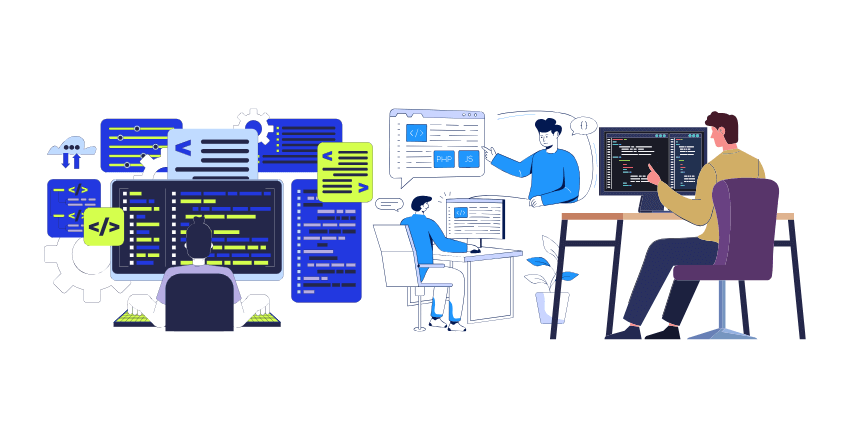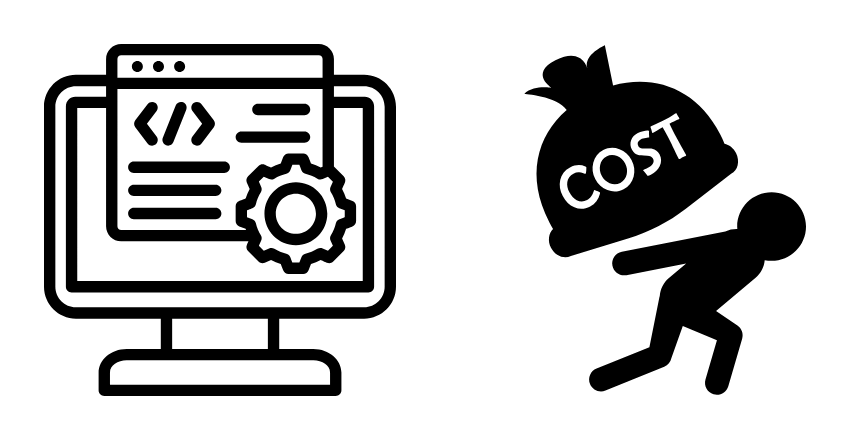Growing your business is exciting until you hit a major roadblock: you need more engineers, and fast. Hiring locally can take months, and onboarding delays often slow everything to a crawl. What if you could scale your engineering team without those headaches? One solution that’s gaining popularity is nearshoring, especially in Brazil.
What Is Nearshore Outsourcing?
Nearshoring is when you hire a team in a nearby country. These countries are in a similar time zone and have a cultural fit, which makes communication much smoother than offshore outsourcing. Brazil, for example, shares overlapping business hours with U.S. companies and has a tech-savvy workforce that’s ready to hit the ground running.
Why Is Brazil a Top Nearshoring Destination?

Brazil stands out for several reasons.
1. Skilled Engineering Talent
Brazil’s tech sector is booming. The country produces thousands of highly skilled software engineers every year. Many of these professionals are well-versed in popular programming languages like Java, Python, and C++.
2. Time Zone Compatibility
Brazil’s time zones are close to U.S. time zones, meaning collaboration is easy. No more staying up all night to connect with your team on the other side of the world. Instead, your engineers can work on projects at the same time as your in-house team.
3. Cost-Effective Rates
While nearshoring isn’t always as cheap as hiring offshore talent from, say, Asia, it’s still more affordable than hiring in major U.S. cities. You’ll get high-quality talent at rates that fit your budget.
How Nearshoring Speeds Up Onboarding
Scaling fast is all about minimizing onboarding delays. Here’s how nearshore teams in Brazil can help:
1. Reduced Language Barriers
Brazilian engineers often have strong English skills, making communication smoother and faster. Clear communication means fewer errors and delays.
2. Familiar Work Culture
Brazil has a modern tech culture that aligns well with U.S. companies. Engineers from Brazil understand Agile, Scrum, and other common development frameworks. They can integrate into your team without a steep learning curve.
3. Talent That’s Ready to Work
Nearshore providers often have a pool of pre-vetted candidates who are ready to join your project. This can significantly cut down hiring and onboarding times.
Steps to Scale Your Engineering Team with Brazilian Talent

Step 1: Identify Your Needs
Before you begin, map out exactly what roles and skills you need. Are you looking for front-end developers? Back-end engineers? QA specialists? Knowing your needs upfront will help you find the right talent quickly.
Step 2: Choose a Trusted Nearshore Partner
Work with a reputable staffing or outsourcing agency in Brazil. Look for partners who have a track record of working with U.S. companies. They should offer services like talent screening, payroll management, and onboarding support.
Step 3: Integrate Your Teams
Once your new hires are in place, focus on building a strong connection between your in-house and nearshore teams. Use collaboration tools like Slack, Zoom, and Jira to stay aligned. Schedule regular stand-ups and meetings to keep communication flowing.
Step 4: Monitor and Optimize
Scaling isn’t a one-time process. Track key metrics like project completion times and code quality. If any bottlenecks appear, work with your nearshore partner to adjust and improve your processes.
How to Evaluate Nearshore Talent (Checklist & Tips)
Hiring nearshore engineers can streamline your project timelines—but to ensure success, you need the right talent. Proper evaluation is key.
Step 1: Clarify Your Project Needs
Before starting your search, define the roles and skillsets required for your team. Be specific about:
- Programming languages (e.g., Python, JavaScript, Java)
- Frameworks and tools (e.g., React, Docker, Kubernetes)
- Development methodologies (Agile, Scrum)
- Project timelines and milestones
Knowing exactly what you need will help you screen candidates faster and with more precision.
Step 2: Review Candidate Resumes and Portfolios
Examine each candidate’s resume for relevant experience. Key items to look for include:
- Completed projects in similar industries or technologies
- Consistent experience with the same programming stack
- Certifications (e.g., AWS, Google Cloud, or Microsoft Azure certifications)
Also, request a portfolio that showcases past work, such as GitHub repositories or live demos of apps they’ve built.
Step 3: Conduct a Technical Interview
A technical interview helps you assess a candidate’s problem-solving ability and technical skills. Here are tips for an effective session:
- Start with Problem-Solving Questions: Present real-world scenarios related to your project and ask how they’d approach the problem.
- Ask About Past Experiences: For example, “Can you describe a time when you optimized a large-scale application for performance?”
- Use Pair Programming Exercises: Collaborate on a coding challenge to see how the candidate communicates and thinks in real time.
Step 4: Use Coding Tests (When Necessary)
For technical roles, especially back-end or full-stack development, you can use coding tests to evaluate:
- Algorithmic Skills: Can the candidate write clean, optimized code under pressure?
- Language-Specific Knowledge: Do they follow best practices in Python, Java, or whatever language your team uses?
Some platforms for coding assessments include:
- HackerRank – Offers customizable coding tests.
- Codility – Provides structured coding challenges to evaluate developers’ skills.
Tip: Keep tests short (under 2 hours) and tailored to tasks the candidate will actually perform on the job.
Step 5: Assess Communication Skills
Strong communication is crucial for remote collaboration. During interviews, evaluate how well candidates:
- Explain complex technical concepts
- Respond to feedback and clarify requirements
- Demonstrate understanding of project goals
Also, gauge their proficiency in English (or your primary business language). Miscommunication can cause project delays, so this step is vital.
Step 6: Check References and Past Client Reviews
Ask for references from previous employers or clients. Questions to ask include:
- “How did the candidate perform under tight deadlines?”
- “How well did they collaborate with other team members?”
- “Were they proactive in suggesting improvements?”
You can also explore client reviews if the candidate worked with a staffing agency or freelancing platform.
Step 7: Test Cultural Fit and Team Dynamics

Your engineering team will work closely with nearshore hires, so it’s important that everyone gels. Look for candidates who align with your company’s work culture and values. Consider scheduling a group interview or informal meeting with key team members to observe their interactions.
Step 8: Trial Periods and Onboarding
For large projects, a trial period can help you ensure the candidate is a good fit. You might start with a short-term contract or a small task to evaluate performance before fully integrating them into the team.
Step 9: Collaborate with a Trusted Nearshore Partner
Working with an experienced nearshore outsourcing partner can simplify the vetting process. They often have pre-vetted talent pools and handle candidate screening, payroll, and compliance, saving you time and resources.
Summary Checklist for Evaluating Nearshore Engineers
| Evaluation Step | Action Item |
|---|---|
| Define project needs | List roles, tech stack, and requirements |
| Review resumes & portfolios | Check for relevant experience and projects |
| Conduct technical interview | Test problem-solving and tech expertise |
| Use coding tests | Evaluate coding quality and efficiency |
| Assess communication | Ensure clear and effective communication |
| Check references | Ask about past performance and collaboration |
| Test cultural fit | Gauge alignment with your team’s values |
| Trial and onboarding | Start with a small task or trial period |
| Use a nearshore partner | Leverage pre-vetted talent if needed |
Tools to Help with Team Integration
These tools can make collaboration between your in-house and nearshore teams seamless:
- Slack: Instant messaging and file sharing.
- Trello: Task and project management.
- Zoom: Video conferencing for meetings and check-ins.
- GitHub: Code collaboration and version control.
- Confluence: Document sharing and knowledge base creation.
Is Nearshoring Right for Your Business?
Nearshoring can be a game-changer if you want to scale without the usual hiring and onboarding headaches. Brazil offers a strong talent pool, time zone alignment, and cost-effective rates. Whether you’re a startup or an enterprise, building a nearshore engineering team could be your next big growth move.












